Abstract
Six tributary streams and southern Cayuga Lake in central New York state were sampled for the presence of Salmonella on swabs immersed for 4 days. Of a total of 322 swabs, 39% yielded salmonellae. Swabs were cultured in tetrathionate enrichment at 41.5 degrees C. Isolations were made from brilliant green agar. Salmonellae were isolated from many sites on the streams and from some lake sites. Twenty-five serotypes (11 somatic antigen groups) and a distinct biotype of S. typhimurium (H2S negative) were found. Most frequent isolates, in order of decreasing occurrence, were S. typhimurium, S. thompson, S. oranienburg, and S. enteritidis. Several uncommon isolates also appeared. When tested for mouse infectivity, the isolates generally showed little or no virulence. The incidence of clinical salmonellosis among humans was low in the area and the variety of serotypes had not been noted among cattle. The presence of Salmonella in waters ranging in classification from potable to agricultural and industrial indicated the existence of a low level and undefined reservoirs of the bacteria in the region.
Full text
PDF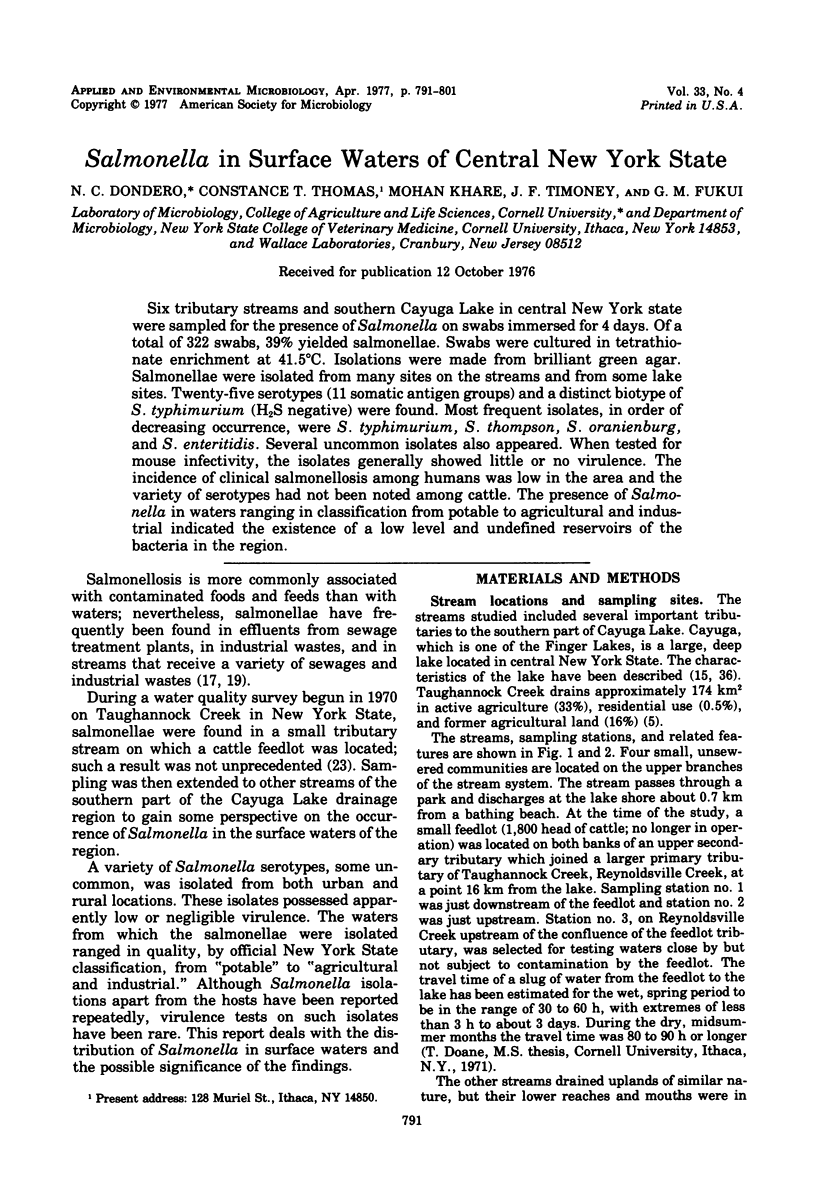
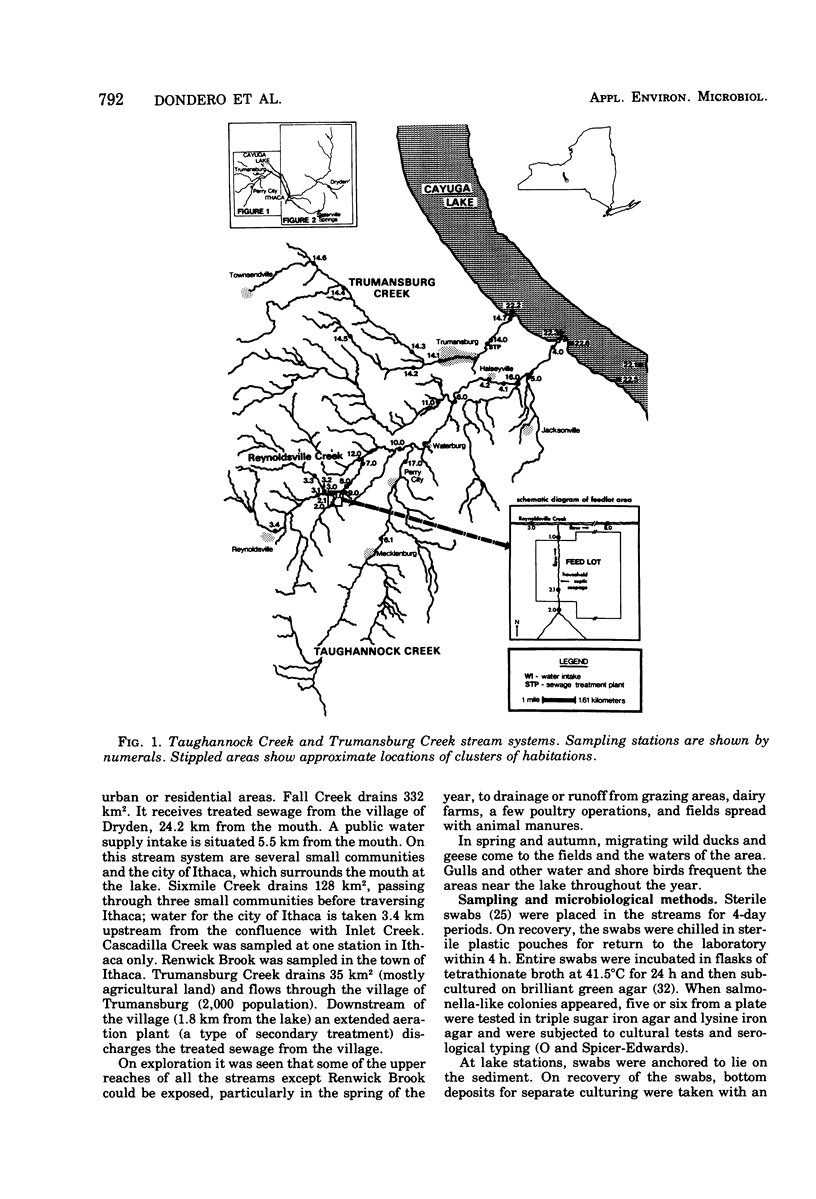
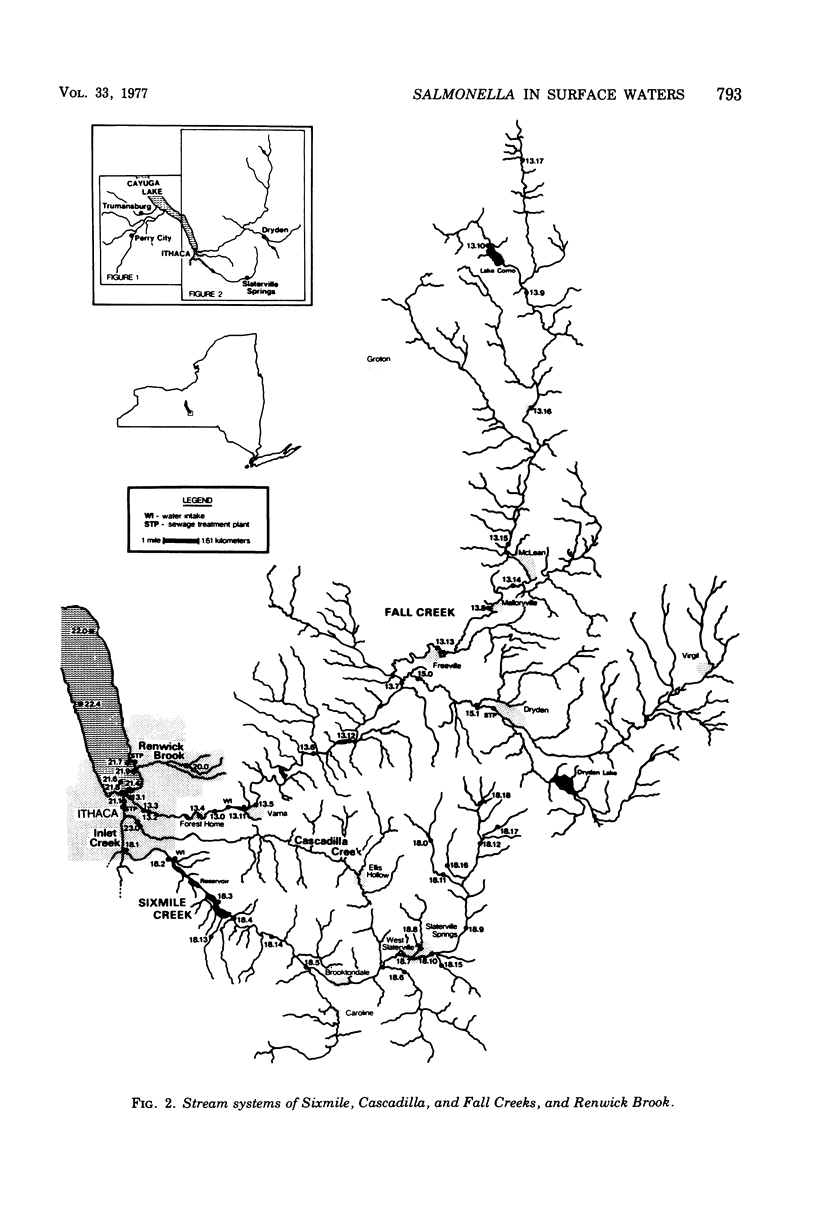
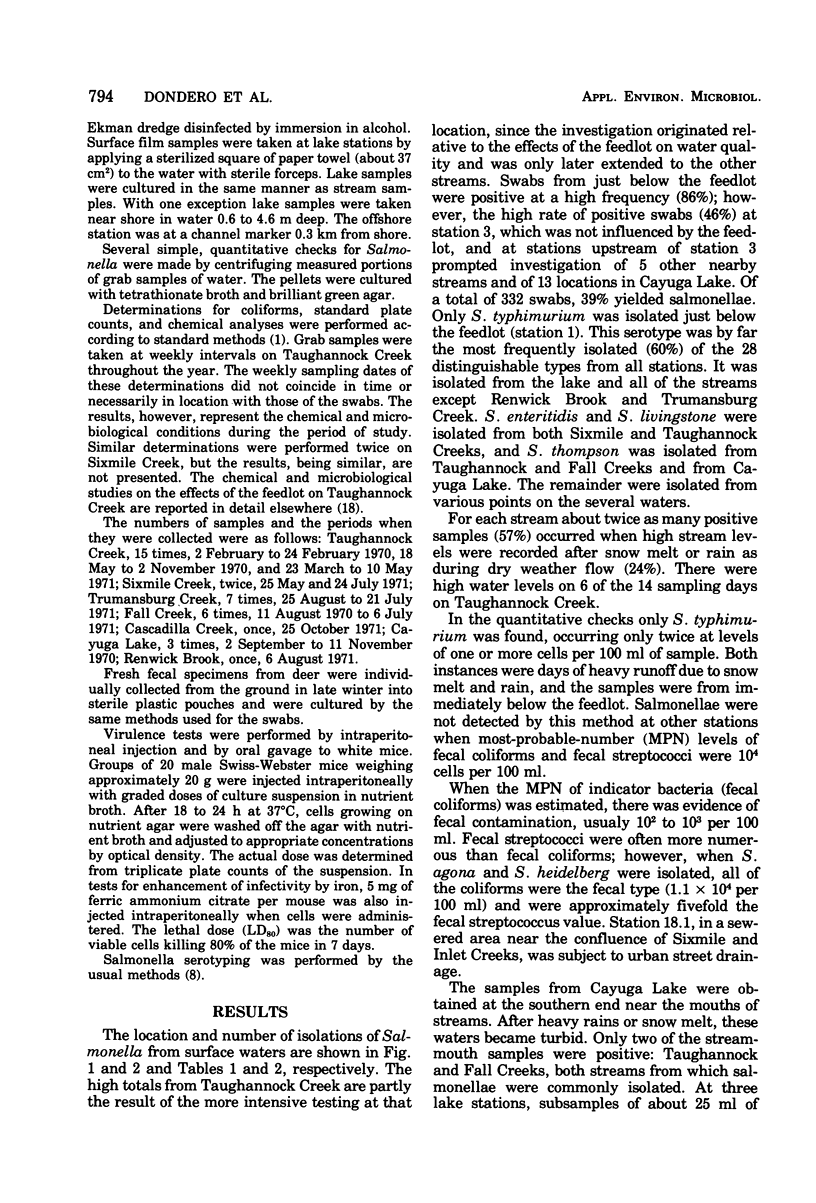
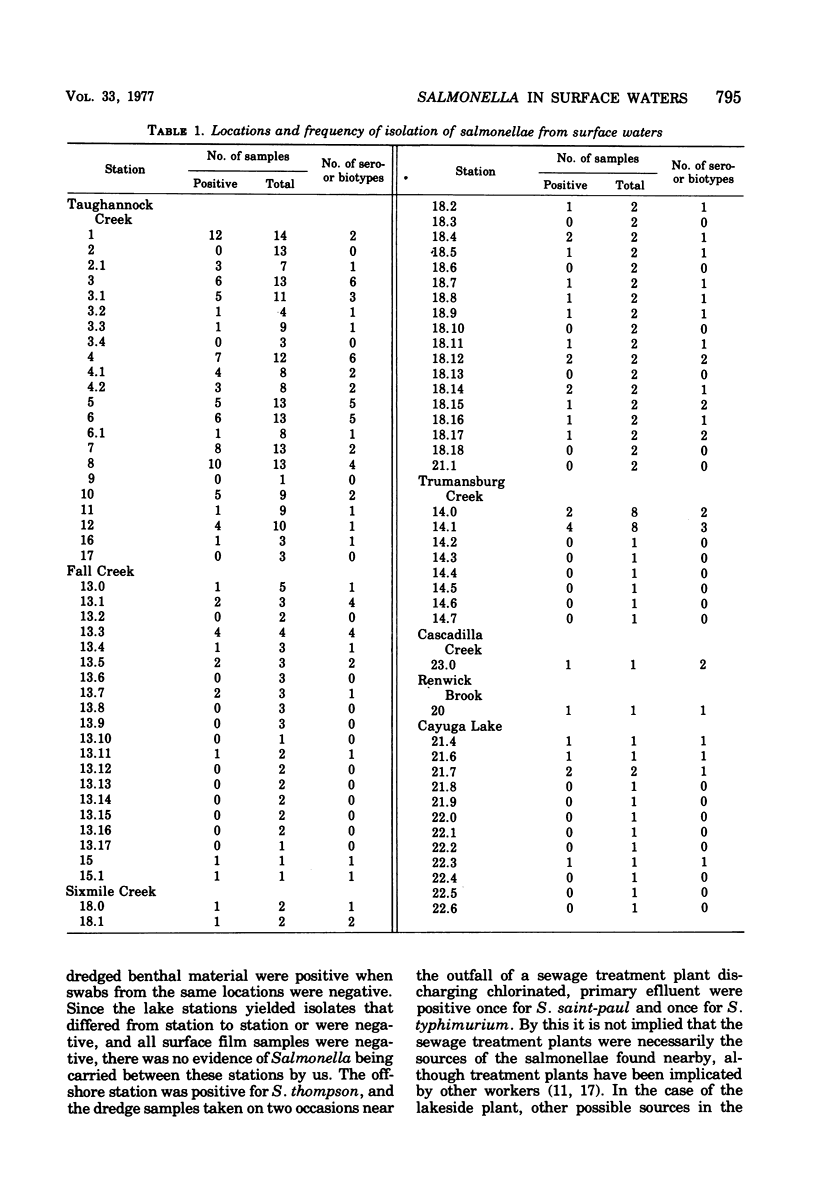
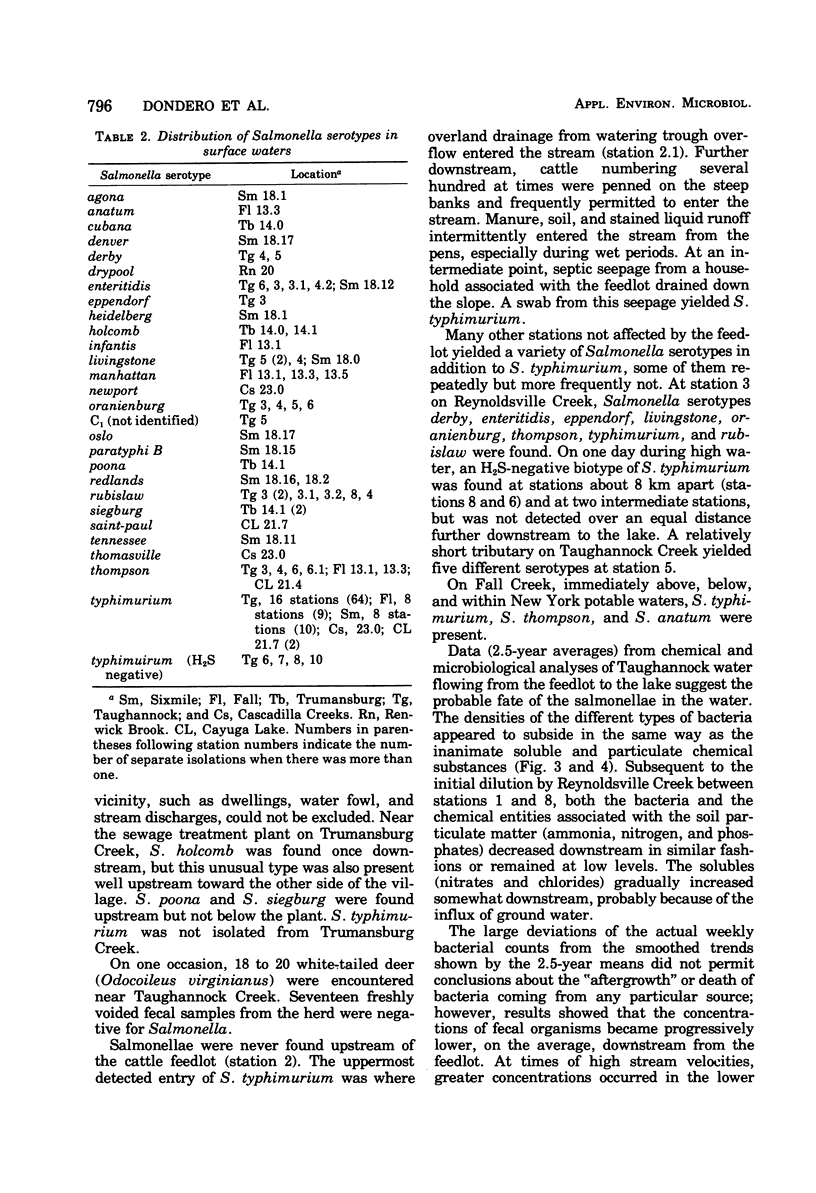
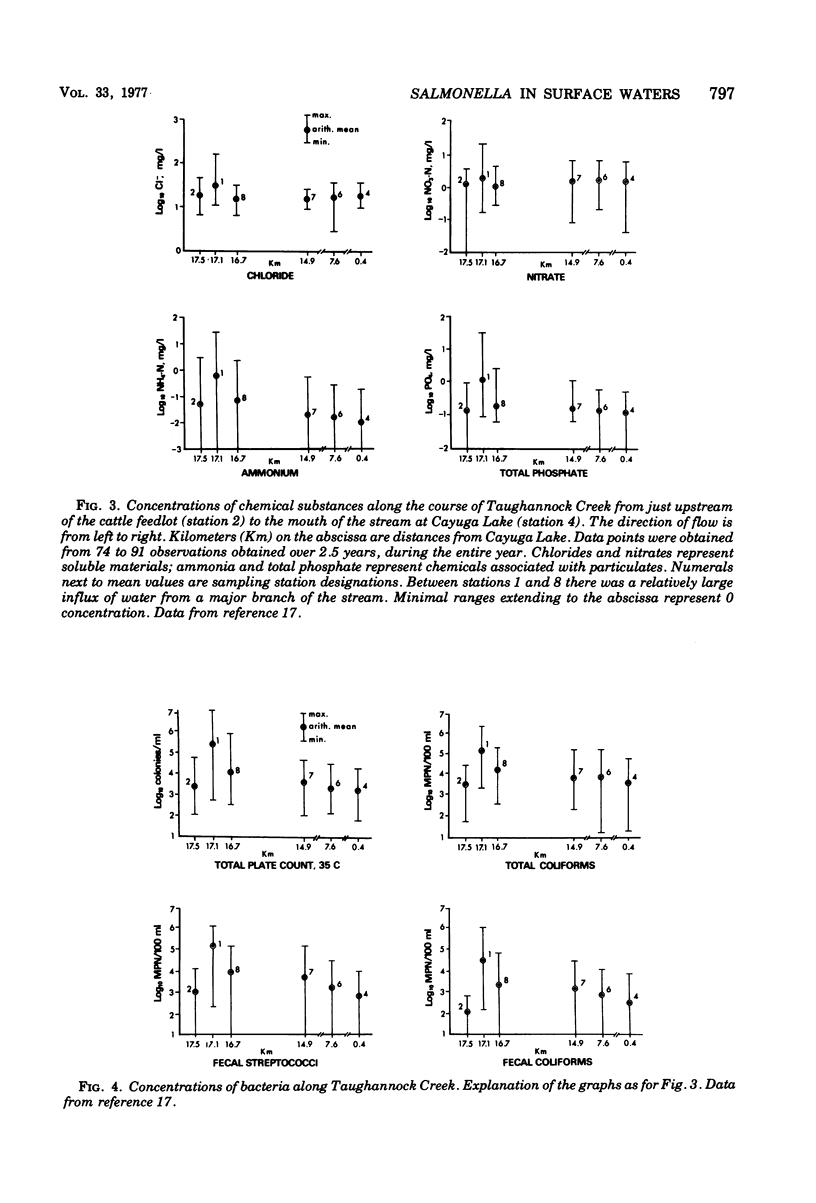
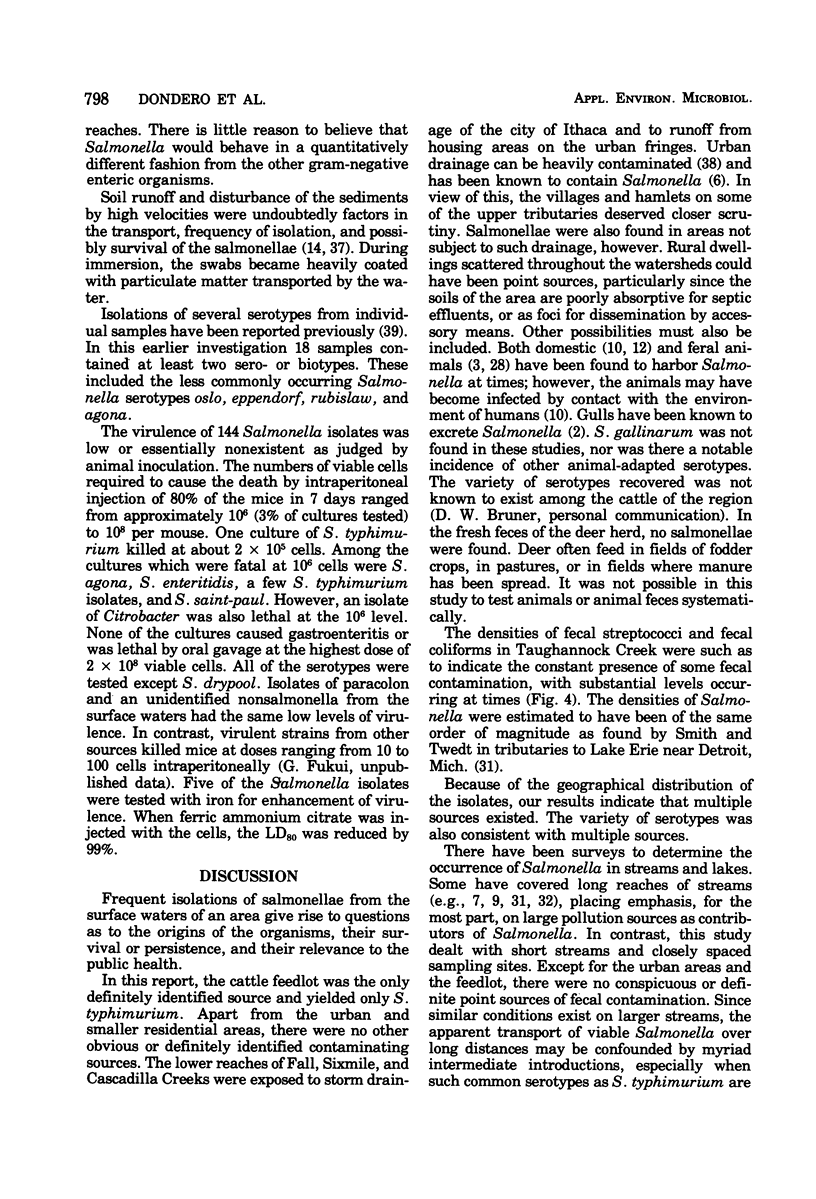
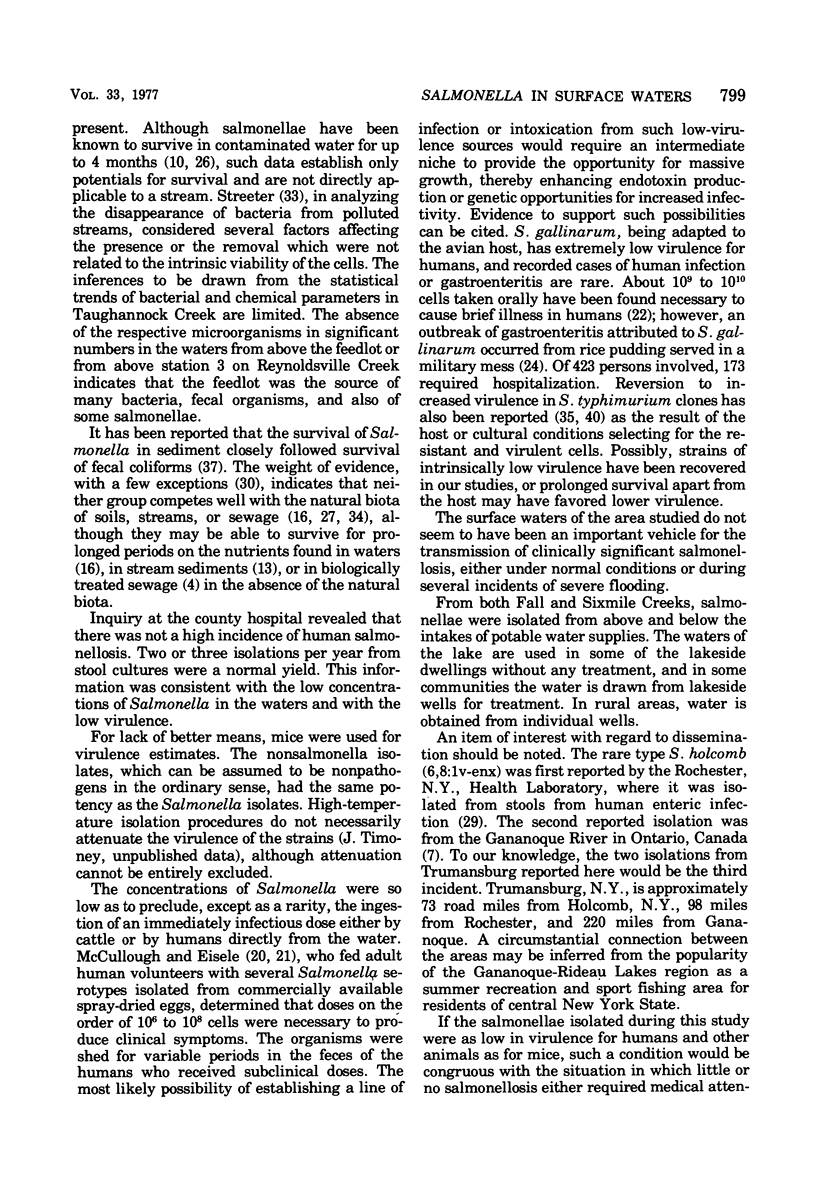
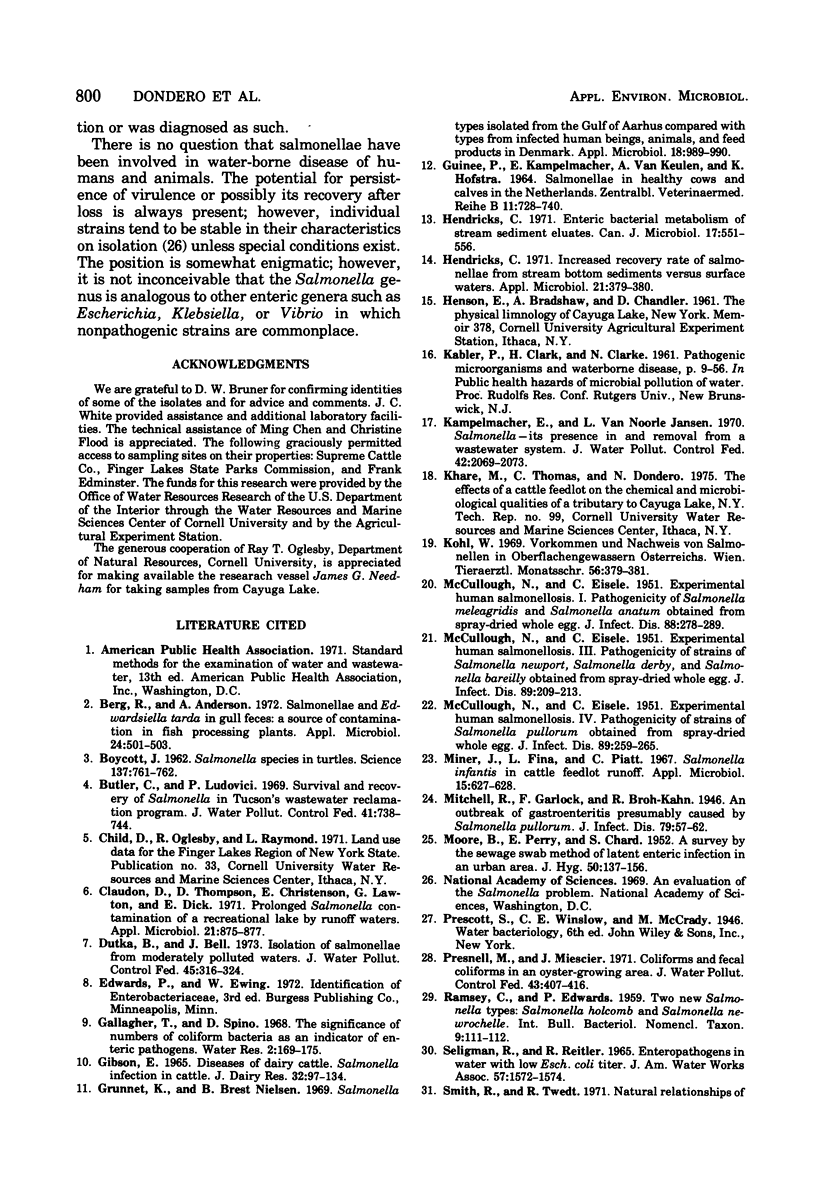
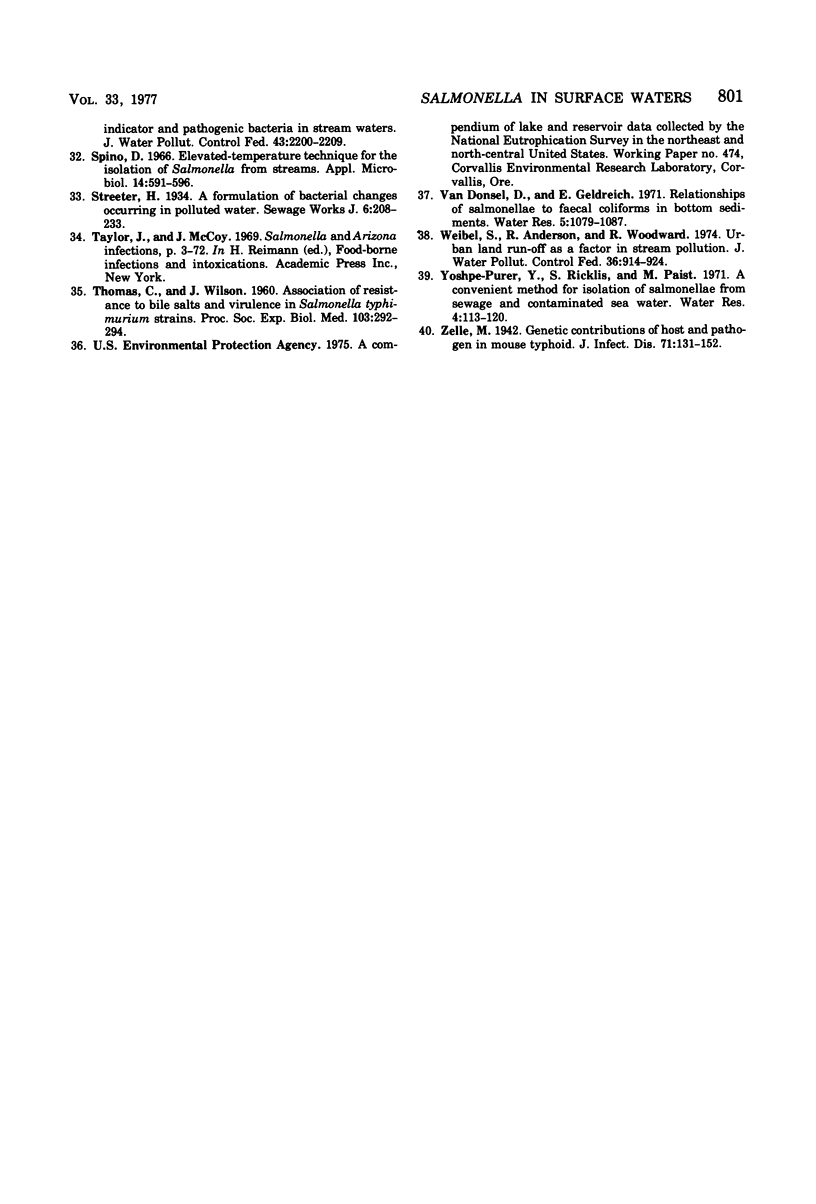
Selected References
These references are in PubMed. This may not be the complete list of references from this article.
- Berg R. W., Anderson A. W. Salmonellae and Edwardsiella tarda in gull feces: a source of contamination in fish processing plants. Appl Microbiol. 1972 Sep;24(3):501–503. doi: 10.1128/am.24.3.501-503.1972. [DOI] [PMC free article] [PubMed] [Google Scholar]
- Boycott J. A. Salmonella Species in Turtles. Science. 1962 Sep 7;137(3532):761–762. doi: 10.1126/science.137.3532.761. [DOI] [PubMed] [Google Scholar]
- Butler C. E., Ludovici P. P. Survival and recovery of salmonella in Tucson's wastewater reclamation program. J Water Pollut Control Fed. 1969 May;41(5):738–744. [PubMed] [Google Scholar]
- Claudon D. G., Thompson D. I., Christenson E. H., Lawton G. W., Dick E. C. Prolonged Salmonella contamination of a recreational lake by runoff waters. Appl Microbiol. 1971 May;21(5):875–877. doi: 10.1128/am.21.5.875-877.1971. [DOI] [PMC free article] [PubMed] [Google Scholar]
- Dutka B. J., Bell J. B. Isolation of salmonella from moderately polluted waters. J Water Pollut Control Fed. 1973 Feb;45(2):316–324. [PubMed] [Google Scholar]
- Grunnet K., Nielsen B. B. Salmonella types isolated from the gulf of Aarhus compared with types from infected human beings, animals, and feed products in Denmark. Appl Microbiol. 1969 Dec;18(6):985–990. doi: 10.1128/am.18.6.985-990.1969. [DOI] [PMC free article] [PubMed] [Google Scholar]
- Hendricks C. W. Enteric bacterial metabolism of stream sediment eluates. Can J Microbiol. 1971 Apr;17(4):551–556. doi: 10.1139/m71-090. [DOI] [PubMed] [Google Scholar]
- Hendricks C. W. Increased recovery rate of salmonellae from stream bottom sediments versus surface waters. Appl Microbiol. 1971 Feb;21(2):379–380. doi: 10.1128/am.21.2.379-380.1971. [DOI] [PMC free article] [PubMed] [Google Scholar]
- Kampelmacher E. H., Noorle Jansen LM vnn Salmonella--its presence in and removal from a wastewater system. Dis Colon Rectum. 1970 Nov-Dec;13(6):2069–2073. [PubMed] [Google Scholar]
- Kohl W. Vorkommen und Nachweis von Salmonellen in Oberflächengewässern Osterreichs. Wien Tierarztl Monatsschr. 1969 Nov;56(9):379–381. [PubMed] [Google Scholar]
- MOORE B., PERRY E. L., CHARD S. T. A survey by the sewage swab method of latent enteric infection in an urban area. J Hyg (Lond) 1952 Jun;50(2):137–156. doi: 10.1017/s0022172400019501. [DOI] [PMC free article] [PubMed] [Google Scholar]
- McCULLOUGH N. B., EISELE C. W. Experimental human salmonellosis. I. Pathogenicity of strains of Salmonella meleagridis and Salmonella anatum obtained from spray-dried whole egg. J Infect Dis. 1951 May-Jun;88(3):278–289. doi: 10.1093/infdis/88.3.278. [DOI] [PubMed] [Google Scholar]
- McCULLOUGH N. B., EISELE C. W. Experimental human salmonellosis. III. Pathogenicity of strains of Salmonella newport, Salmonella derby, and Salmonella bareilly obtained from spray-dried whole egg. J Infect Dis. 1951 Nov-Dec;89(3):209–213. doi: 10.1093/infdis/89.3.209. [DOI] [PubMed] [Google Scholar]
- McCULLOUGH N., EISELE C. W. Experimental human salmonellosis. IV. Pathogenicity of strains of Salmonella pullorum obtained from spray-dried whole egg. J Infect Dis. 1951 Nov-Dec;89(3):259–265. doi: 10.1093/infdis/89.3.259. [DOI] [PubMed] [Google Scholar]
- Miner J. R., Fina L. R., Piatt C. Salmonella infantis in cattle feedlot runoff. Appl Microbiol. 1967 May;15(3):627–628. doi: 10.1128/am.15.3.627-628.1967. [DOI] [PMC free article] [PubMed] [Google Scholar]
- Presnell M. W., Miescier J. J. Coliforms and fecal coliforms in an oyster--growing area. J Water Pollut Control Fed. 1971 Mar;43(3):407–416. [PubMed] [Google Scholar]
- Spino D. F. Elevated-temperature technique for the isolation of Salmonella from streams. Appl Microbiol. 1966 Jul;14(4):591–596. doi: 10.1128/am.14.4.591-596.1966. [DOI] [PMC free article] [PubMed] [Google Scholar]
- THOMAS C., WILSON J. B. Association of resistance to bile salts and virulence in Salmonella typhimurium strains. Proc Soc Exp Biol Med. 1960 Feb;103:292–294. doi: 10.3181/00379727-103-25492. [DOI] [PubMed] [Google Scholar]


